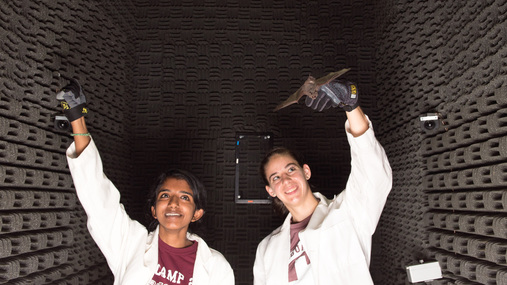|
Our lab studies bats because of their sensitive hearing, extraordinary biosonar capabilities and their broad repertoire of communication calls and social behaviors.
We study the behavior and neurophysiology of biosonar to elucidate the mechanisms and strategies by which bats locate and classify targets by listening to echo streams. The biosonar performance of bats and cetaceans is far superior to man-made sonar, so lessons learned from bats also provide inspirations for technological improvements. Communication is an essential part of being social. An animal’s vocal communications provide a window into their cognitive capabilities, motivations, and behavioral ecology. Vocal communication systems are highly diverse because they have been shaped by intense natural and sexual selection. Studying communication behaviors and their underlying brain networks provides important insights into the evolution of the social brain. |
BioSonar
Echolocation is an exciting model system for exploring how sensory and motor brain pathways interact to control behavior on a millisecond time scale. Our behavioral studies with flying bats explores how they adjust their behavior in crowded spaces to minimize interference with one another. We are also investigating how bats modulate their pulse emissions to discriminate between similar targets. This research has direct relevance for improving artificial sonar systems, unmanned vehicle guidance systems, and wireless communications systems.
|
CommunicationSinging by bats offers exiting new opportunities to explore how mammals and birds converged upon a similar behavior via different neural mechanisms. We use field and behavioral studies to explore how and why bats use singing under natural conditions.
|
NeurophysiologyAuditory Neuroscience: We're using electrophysiology, chemogenetics and optical imaging to map the neurocircuits that produce and encode echolocation calls.
Echo Perception and Auditory Object coding : Bats rely upon fine acoustic features embedded within streams of echoes to reconstruct the size and shape of targets. Understanding how the auditory system represents different sounds with different patterns of neural activity is a fundamental question in neuroscience. Bats offer unique opportunities to investigate how the brain interprets sensory information. |



